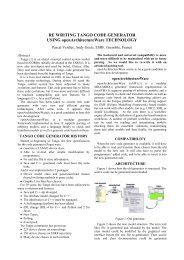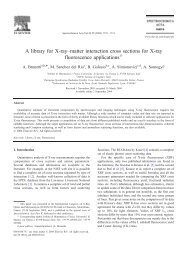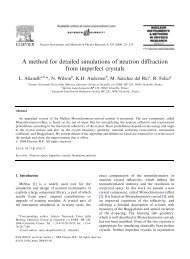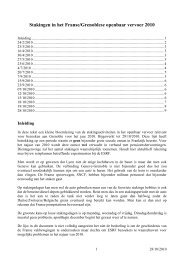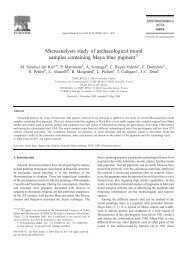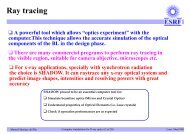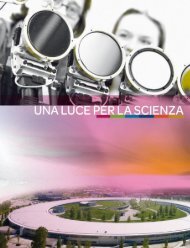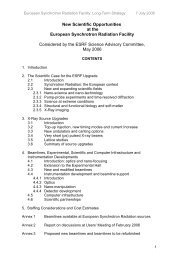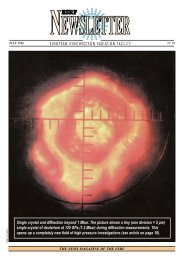Report on future detector requirements at ESRF
Report on future detector requirements at ESRF
Report on future detector requirements at ESRF
You also want an ePaper? Increase the reach of your titles
YUMPU automatically turns print PDFs into web optimized ePapers that Google loves.
High energy diffracti<strong>on</strong><br />
Project (Former BL) Applic<strong>at</strong>i<strong>on</strong><br />
UPBL02 (ID15)<br />
ID09HP, ID06LVP (ID09HP + ID06LVP)<br />
HP (ID27)<br />
Diffracti<strong>on</strong><br />
M<strong>at</strong>Sci (ID11)<br />
PMF (ID06)<br />
Aim of the detecti<strong>on</strong> system<br />
The aim of the detecti<strong>on</strong> system is to count phot<strong>on</strong>s in order to record diffracti<strong>on</strong> p<strong>at</strong>terns and<br />
study their evoluti<strong>on</strong> during solid st<strong>at</strong>e reacti<strong>on</strong>s, change of pressure, change of temper<strong>at</strong>ure,<br />
eventually faster reacti<strong>on</strong>s…<br />
M<strong>on</strong>ochrom<strong>at</strong>ic<br />
beam<br />
Sample<br />
Detector<br />
Oper<strong>at</strong>ing c<strong>on</strong>diti<strong>on</strong>s and specific<strong>at</strong>i<strong>on</strong>s<br />
Energy range:<br />
The energy range addressed by this descripti<strong>on</strong> goes from 25 to 125 keV with particularities<br />
for each beamline:<br />
- M<strong>at</strong>Sci covers the entire range, but oper<strong>at</strong>es most often below 100 keV;<br />
- PMF goes up to 60 keV and works most frequently between 30 and 40 keV;<br />
- ID09HP, ID06LVP and HP work between 30 and 80 keV, but mainly <strong>at</strong> 30 keV<br />
(about 70% of beamtime);<br />
- UPBL02 works between 80 and 120 keV.<br />
Integr<strong>at</strong>i<strong>on</strong> time:<br />
Applic<strong>at</strong>i<strong>on</strong>s can range from st<strong>at</strong>ic characteris<strong>at</strong>i<strong>on</strong>, with exposure time of <strong>on</strong>e to several<br />
sec<strong>on</strong>ds, to time-resolved experiments (chemical reacti<strong>on</strong>s, evoluti<strong>on</strong> during he<strong>at</strong>ing, …),<br />
with exposure time of 1 to 100 ms. In those cases, shutterless oper<strong>at</strong>i<strong>on</strong> may be necessary.<br />
Another type of applic<strong>at</strong>i<strong>on</strong>s (diffracti<strong>on</strong> in pulsed magnetic fields in order to oper<strong>at</strong>e in<br />
stroboscopic mode, powder diffracti<strong>on</strong> using the time structure of the electr<strong>on</strong> beam <strong>at</strong><br />
UPBL02) would require microsec<strong>on</strong>d or sub-microsec<strong>on</strong>d integr<strong>at</strong>i<strong>on</strong> time.<br />
Finally, diffracti<strong>on</strong> in pulsed magnetic fields could be carried out in “burst mode”, th<strong>at</strong> is<br />
reading around 1000 single frames with an exposure time of 1 ms per frame as quickly as<br />
possible and having, after the burst, several minutes for d<strong>at</strong>a storage.<br />
44



